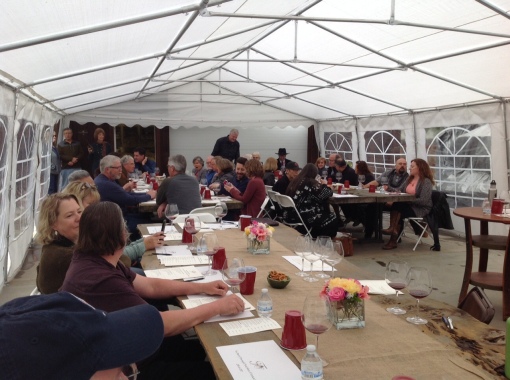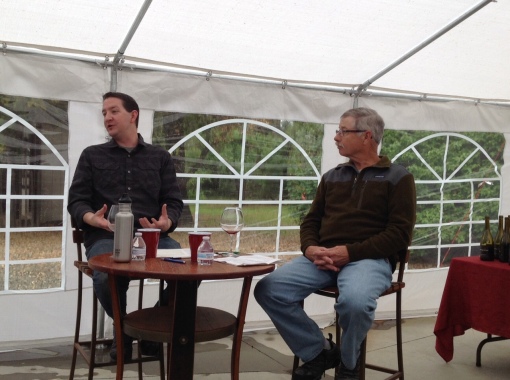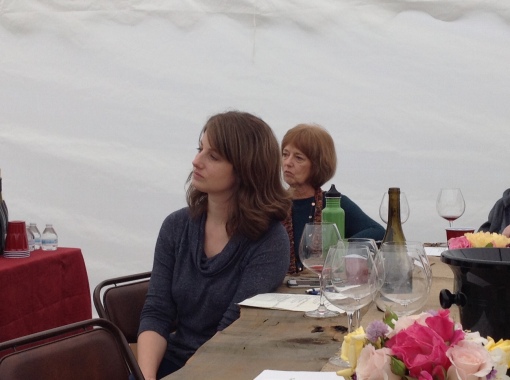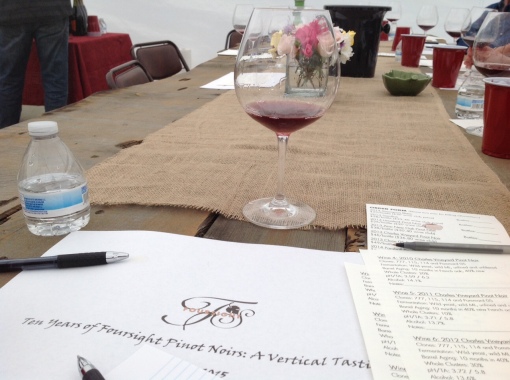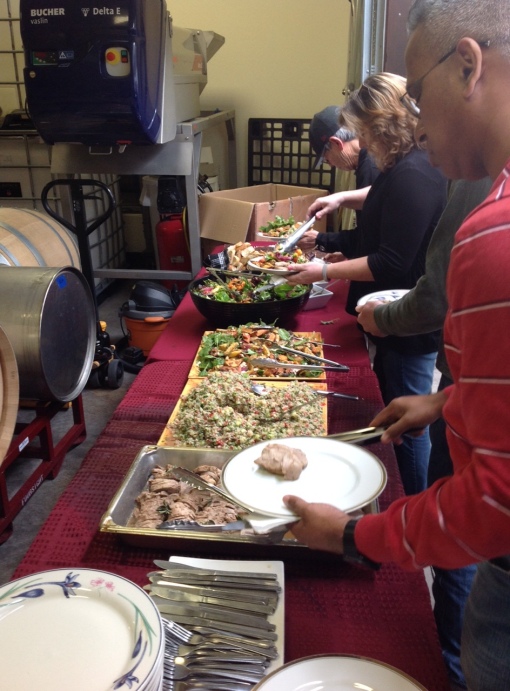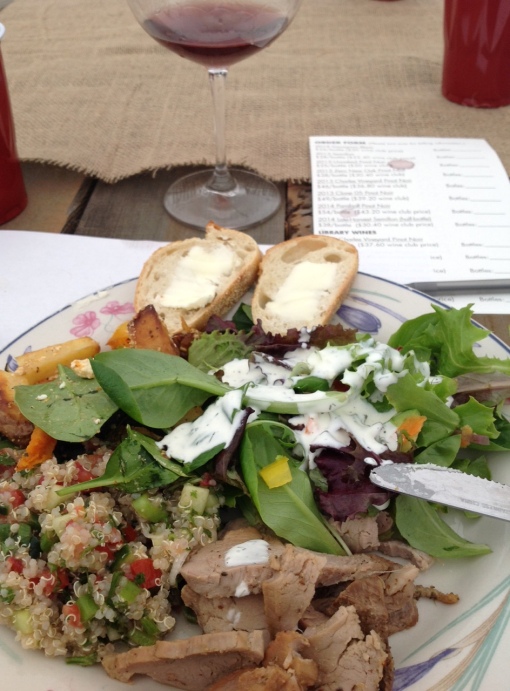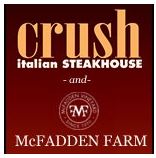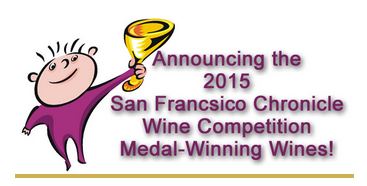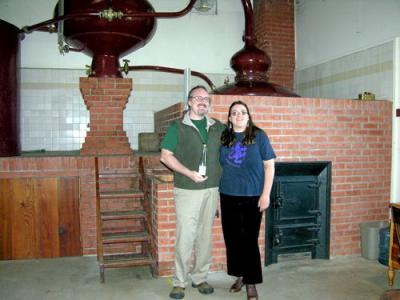ZAP. For Bay Area wine lovers, especially those with a fondness for Zinfandel, those three letters forming that one little word bring an automatic smile. ZAP is short for Zinfandel Advocates & Producers, a wine industry group dedicated to the promotion of Zinfandel wine and the Zinfandel grape, and although they are attempting to brand their January event as the Zinfandel Experience, or #ZinEx, for many their big January event is also referred to as ZAP, as in, ”I’ve got my tickets to ZAP, I can’t wait to get my Zin on.”
#ZinEx is not a single January event, but a series of events held over four days. This year, on Wednesday, January 29, a trade and media tasting event was held away from the crowds at Rock Wall Wine Company in Alameda. I did not attend this event, but my friend John Compisi did attend and I’ll link his recap here for you to read about it.
For me, #ZinEx started Thursday night, at the Golden Gate Club at the Presidio in San Francisco with Epicuria, an evening of wine and food pairings, where top chefs from restaurants, catering companies, and culinary colleges create delicious bites specifically intended to complement the flavors of Zinfandel wine. 32 wineries and kitchens were represented.
Here are some pairings I enjoyed immensely:
2013 Carol Shelton Wines Wild Thing “Old Vines, Mendocino County with Ruth’s Chris Steak House of San Francisco and Walnut Creek’s Double Chop Lamb Lollipops with Veal Demi Glaze.

1995 Old Hill Vineyard from Ravenswood, poured by Joel Peterson; Zinfandel plus 40 other varieties from a vineyard planted in 1862 and replanted in 1885. Paired with a Lamb Merguez Sausage with Mango Chutney, Paprika Spiced Onions and Italian Giardiniera Peppers from Rosamunde Sausage Grill in San Francisco.

Pacific Fine Food Catering of Alameda stepped up at the last minute, filling in for a fail restaurant, and had every taster talking about their amazing ribs, which I paired with the 2014 Mendocino County Fair wine Competition’s Best of Show Red, the 2012 Artezin Zinfandel, Mendocino County.

Seghesio Family Vineyards’ 2012 Rockpile paired perfectly with the Seghesio Zin and cherry glazed St. Louis Ribs prepared by their executive chef, Peter Janiak. Perfect smoke bark, delicious.

2012 m2 “Old Vine” Saucie Vineyard, Lodi paired with the San Francisco Cheesecake Company’s Dark Chocolate m2 Zinfandel SF Cheesecake and their Wild Huckleberry m2 Zinfandel SF Cheesecake were wonderfully creamy and lovely bites with sips.

I paired a barrel sample of 2013 Andis Wines Amador Zin with Santa Rosa’s Flavor Bistro Sweet Potato Timbale with a trio of Cheeses garnished with Alba Mushrooms and Redemption Glaze and the Presidio Social Club of San Francisco’s Sea Salt Roasted Devil’s Gulch Pork Leg.

The 2012 Dry Creek Vineyard Wallace Ranch Estate Zin with the Bistro Boudin of San Francisco’s Braised Beef Stew was my last bite and sip and, with apologies to all the unsipped and untasted treats remaining, I was delighted with everything that passed my lips.

_____
Friday morning, I attended Flights! at San Francisco’s Four Seasons hotel, a seated panel tasting with an educational component. This year’s Flights! Tasting would feature three panels of winemakers with wines from three different American Viticultural Areas, AVAs, for an exploration of the area specific characteristics, or Terroir based differences, that result in the Zinfandels produced from these three very different areas.

I was seated at a table with Joel Butler, MW. MW is the designation for a Master of Wine, which means that Joel has a remarkable palate and an amazingly encyclopedic knowledge of the world’s wines.
Flights! was moderated by a personal hero of mine in the wine world, Joel Peterson of Ravenswood. Joel told those assembled that, “we’re going to be talking about Zinfandel, the shape shifter. As we go on, you’ll see what I mean,” and, “the driver of difference is place; it has a wider range of growing locations than almost any other grape, we’re going to watch it change colors.”
The first panel focused on the Zinfandel of Contra Costa County, and Joel told us, “Contra Costa County is really sandy…the sands are really amazing. Phylloxera cannot live on sandy soil; these Zinfandel are planted on their own roots.”

John Kane poured the 2012 Carla’s Reserve from Rosenblum Cellars, and painted a picture of the vineyard near the Antioch bridge, a K-mart, rail road tracks, in the middle of town. The wine was marked by notes of light tar, caramel, cherry, chocolate and salt, and was made using 3-4 styles of yeast, 15% new oak, micro bin small lot whole cluster fermentation, and had Mourvèdre (also known as Mataró) from the field in the blend.
Nathan Kandler poured Precedent Wines’ 2012 Evangelho Vineyard Zinfandel, running 75-80% Zin, with Mataró, Carignane, as well as two white grapevines, Palomino and Muscat, also in the block. Nathan described the vineyard, planted in 1890, with delta drift sands 30-40 feet deep, and said “sandy soils give bright acidity, fruit driven, suave tannins.” The wine tasted of ripe bright strawberry and raspberry fruit. Nathan used no new oak, but used French Chardonnay barrels.
Charlie Tsegeletos offered up his 2012 Big Break Vineyard Zin from Cline Cellars, and described the, “very, very deep sand,” and, “roots penetrating 30 feet.” Charlie told us the, “old vines [were] planted when Woodrow Wilson was in office, when Henry Ford established the assembly line.” With no fining, this was essentially a vegan wine, and the vineyard relies on “dry farming in these near desert conditions and sandy soil.’ The result was a darker, but balanced, multi-noted, meaty wine, plummy with cassis and a touch of mint,
Matt Cline poured the 2012 Three Wine Company Zinfandel, Live Oak, a vineyard with about nearly equal parts Zinfandel, Carignane, and Mataró originally planted mid 1888, with less than 10% Mataró and Carignane remaining today. There is also some Alicante planted perpendicular to the vineyard block. Matt humorously noted, “I’ve been making wines for about 30 years, and I think I’m the only one doing it right. Listening to these new guys, I think they’re coming along.” Matt added the river influenced winds of Contra Costa’s delta to the list of influences, and noted the “many droughts in the last 125 years, and these dry farmed vines in sand just keep going.” Fermenting in the 60’s, cool temperature wise, using a mix of American and French oak, 30% new, the sandy soils and wind resulting in “dusty berry earth,” notes, I picked up herbal blackberry, sweet tart black cherry, and floral raspberry notes.
Last up for Contra Costa County was Shauna Rosenblum, who of course started at her parents’ winery Rosenblum Cellars before creating wines at Alameda’s Rock Wall Wine Company. Shauna poured her 2012 Jesse’s Vineyard, which is also planted to Carignane and Mataró, “old school field blends,” harvested and co-fermented. About the vintage, Shauna shared the words of a sage industry friend, “2012 is a one in a hundred year vintage.” About 2013, she shared, “2013 is a one in a hundred year vintage.” Using multiple yeasts, including sparkling wine yeasts, 15-20% new oak, Shauna let the fruit show. The wine had a dessert custard nose, and notes of pepper, salt, tobacco, cocoa, blackberry, and a raspberry chocolate brownie flavor.
Joel Butler asked the panel about low pH and TA for Contra Costa wine, and Joel Peterson followed up asking if the sandy soil and deep roots or the climate were responsible. Matt Cline suggested the Contra Costa’s grapes are within ½ mile of water, so much cooler than the 1 ½ mile from water people typically think of when they think of Contra Costa locations, and this water is a cooling influence.
The second panel featured winemakers from Amador County. Amador County is made up of granitic soil, and is sometimes rocky, with Joel describing, “decomposed granite, low humidity, high luminosity, with 65 acres of vines 65 years or older.

Scott Harvey was up first with his 2012 Vineyard 1869 wine from his eponymous winery. The vineyard is, “the oldest document Zinfandel in the nation,” relying on, “a mining claim identifying one plot corner as being this vineyard planted to Zinfandel,” as the documentation for the claim. Scott described higher altitude planted vines, leading to higher tannins, a warm region, old vines with no irrigation, running out of available moisture at the end of vintage, higher alcohol wines, a touch green, from dehydration of the grapes, the best wines come from grapes picked after the first rain, and a second ripening. The wine showed tea, meat and soil, and raspberry.
Paul Sobon of Sobon Estate poured his 2012 Rocky Top. I visited Sobon perhaps a half dozen times in 2000 and 2001, when matriarch Shirley Sobon would order books and imprinted corkscrews from me, back when I worked for the Wine Appreciation Guild. When Paul described, “pretty intense volcanic mud flow, and solid, solid, solid rock,” I could picture it clearly. Paul also talked about ‘tractor blight’ as some near vertically horse or mule planted vines were taken out by less nimble tractors. 30-35% new oak, 16-18 months, 3-5% Carignane in the mix, the Rock Top showed familiar Amador dry Amador spic, clove, woody, and red fruit notes, almost structural.
Chris Leamy brought the 2012 Terra d’Oro, Deaver Vineyard, Zinfandel. 20 acres, 1881, swailed horseshoe shaped, the vineyard presents many different sun exposures, which makes an already uneven ripening variety an even greater challenge. Chris described Deaver as, “a really high acid vineyard,” that shows Amador clove, allspice, and cinnamon, and tends to tannin. To bring fruit forward, Chris ferments in stainless steel, drains and puts back on top of the skins, presses sooner, so the tannins don’t catch up, seeking balance. The wine showed a nice floral perfume. Chris also spoke to the lack of moisture in Amador vineyards, “because they start running out of water, you just have to make a call and go with it, because then you find – in 2002 – you should have picked 3-4 days ago; you really, really should have picked.”
I knew the next winemaker, Randle Johnson, because his 2012 Artizen Zinfandel, Mendocino County had been judged the Best of Show Red Wine at the 2014 Mendocino County Fair wine competition, and I have tasted it often. Today, he poured the 2012 Artezin, Esola Vineyard Zin. Planted own roots vs. root stock, Randle noted that like Contra Cost’s sandy soil, Amador’s volcanic soil allowed Vitis Vinifera’s own stock to survive Phylloxera. “We have water issues, and Zinfandel loves to set a second crop, but we have the money at esola to cut the second crop which helps with water,” explained Randle, adding,”a little rain, I just love fall rain for any non-irrigated Zinfandel vineyard grapes.” Randle also shared, “we try not to add any Jesus units,” and uses 100% French old Cabernet barrels. The wine through perfume, soft floral, and was surprisingly light in body considering the 15.4$ abv. There was abundant cedary red fruit.
The 2012 Turley Wine Cellars, Sadie Upton Vineyard Zin was shared by Tegan Passalacqua, who said, “Amador does get cool at night,” leading to, “higher natural acidity.” Again, the vineyard is ‘own rooted’ which became a bigger buzzword than ‘old vine’ at the tasting. Planted in 1922 by Sadie Upton, Tegan said, “not once have we had dehydration issue in this vineyard.” 20% new oak. There is Cinsault co-planted, and “we take everything in the vineyard and throw it in the fermenter.” Tegan shared a classic description of Amador Zin, “Tastes like it was poured out of a miner’s bucket,” with natural acidity and tannin from granitic soil. I tasted a bright, ref fruited, rose, tar, spice, cherry, strawberry, raspberry wine. Amador’s “wines are very serious, not for noobies, and demand food,” was a final thought shared by Tegan.
I found all five Amador wines threw minerality.
Chris Sawyer, sommelier and writer, asked about the characteristics shared by Amador Zins, and the panel spoke to a combination of tannins and low pH that allow Amador wines to hold up, reduce oxygen absorption, and retain ‘zinniness.’ They also talked about the advantage that comes with using old vines. “Young wines do not develop the character of old vines. An 85 year old guy knows his neighborhood better than a 12 year old. Young vines do not go as deep and do not pick up [as many] flavors [from the soil].”
The last panel of winemakers represented the Dry Creek Valley in Sonoma County, the area I visit the most often among the three, largely because I grew up nearby in Santa Rosa, and it remains the closest of the three areas to where I now live in Ukiah. Joel on Dry Creek Valley: first planted in 1869, dominant grape is Zinfandel, cooler than Amador or Conta Costa. Many series of soil, loam, yolo. Warm days, cool nights. Four of this panels wines were on St. George, with only one on own roots.

The first Dry Creek Valley winemaker was Tim Bell of Dry Creek Vineyard, coiners of the term “old vine” and Tim brought the4 2012 Beeson Ranch Zin. Tim first described the dry Creek Valley, a “long and narrow valley, almost two different regions north and sounth, sixty miles long by two miles wide, warmer in the north, cooler in the south, with a marine influence, fog, and red and brown soils.” About Beeson Ranch, Tim said it is a “field blend vineyard, to me it feel like a lot of soul,” with Zinfandel, Petite Sirah, Carignane, Grenache, Trousseau Gris, Alicante Bouchet, and St. George. In general, Tom said Dry Creek Valley fruit shows, “cherry, raspberry leather, rose petal, with spice laid over the top of it.” About this Dry Creek Vineyard wine, I picked up floral perfume, cherry, raspberry, rose petal, and earth. Tom found, “the wine has distinctive fruit, white pepper, coriander.”
Jamie Peterson, the next winemaker, is no relation to Joel Peterson, but was likely not alone in wishing Joel was his uncle. Jamie poured his 2012 Peterson Winery “Tradizionale” West Vineyard Zinfandel, planted 6’ x 6’ (pre-tractor, which sees 8’ x 8’ spacing) in 1902, and made using, “native yeast when applicable, letting the site express itself,” showing, “lots of complexity and balance,” and, “always ripens a little on the later side, looking at acidity, sugar, flavor,” remarked Jamie about his wine. The vineyard has 5% ‘other’ including Alicante and even Concord. Jammy fruit, spice, herbal, dark cherry, a touch of funk, almost Pinot-esque but on steroids and covered with muscles.
The 2012 Quivera Vineyards Zinfandel, Katz Vineyard was presented by Hugh Chappelle, who described temperature swings in the vineyard of up to 50 degrees, and the soil of the Dry creek Valley as clay loam. “Old vines are truly special…it is just wonderful to capture that in the glass,” enthused Hugh, adding, “deciding when to pick Zin, the lack of uniformity, finding that perfect mix, is quite hard.” According the the Sonoma County assessor’s office, these grapes were planted in 1900, and are a field blend vineyard, including 2$ white varieties. Hugh uses a light touch of oak, “typically French, 20-25% new,” and the wine showed flora rose perfume, and deep rich layered raspberry and chocolate notes.
Glenn Proctor brought the 2012 Puccioni Vineyard Old Vine Zinfandel. Of the 40 acres planted by 1911, today just 3 ½ acres are old vine. Relatively warm, by late afternoon that temperature is lost. 7’ x 7’ mule and plow farmed until 1968, “old vine is history; wine is more than the wine; it is the experience, the history,” said Glenn, a fourth generation winemaker, who will see his son become the fifth generation winemaker on the land. The wine had a nice edge, rhubarb, deep reduced strawberry and cherry jam, and herb notes.
Kerry Damskey rounded out the final panel with his presentation of his 2012 Dutcher Crossing Winery Maple Vineyard “Bill’s Block” Zin. The vineyard was planted in 1940 on the Dry Creek bench, by Lytton Springs, in gravely loam; dry farmed, head trained, a field blend with 82% Zinfandel, and Petite Sirah, Carignane, Alicante, and a single Ruby Cabernet vine making up the balance, and co-fermented. Kerry explained, “when you co-ferment, it helps the fermentation to finish. It always gives a nice integration. Maple Vineyard makes itself.” About the temperature, Kerry said, “Dry Creek does get quite warm and really gets cold at night.” 3.7-3.75 pH, not that low, pushes cherry – black cherry flavors, and Kerry uses 30% new tight grain oak, with 10 months in barrel. I picked up notes of black cherry, strawberry pie, basil herb, and cedar.

I love Flights!, because I love learning, and being able to taste how each area produced wines that were distinctively expressing terroir, while winemaking allowing differences, was a terrifically worthwhile way to spend a morning.
_____
There was a fancy dinner Friday night, featuring large format bottles, and while I found the bottle room, I was not able to attend the event. One day.

_____
For most folks ZAP brings to mind the insane crowds that used to pack first one, then two enormous halls at Ft. Mason in San Francisco. I used to attend these events, and loved them, but started attending in the early trade and media hours and then abandoning the event when the doors were opened to the hoards.
For the last two years, I have attended a much nicer event at the Presidio in San Francisco. Not as crowded, the folks at Zinfandel Advocates & Producers clearly are selling fewer tickets, and the quality of the event has skyrocketed.
The Tasting on Saturday features 116 wineries pouring Zinfandel. I intended to taste all of the wines made from Mendocino County’s grapes, but I pretty much already had, and reviews of those wines have been featured in previous articles in the Ukiah Daily Journal. This Saturday, I simply let myself taste in a more delightedly haphazard fashion, with little concern for where the grapes came from.
First up, I visited the Bedrock Wine Company table. Pouring were Chris Cottrell and Morgan Twin-Peterson (Joel Peterson’s son). I first met Morgan at a previous Flights! tasting panel tasting, and consider him a young superstar winemaker. Great place to start, I figured.

2013 Bedrock Old Vine, California – 75.6% Zin with Carignane , Mourvedre, and Alicante. Bright strawberry, lovely cherry, herb, and mint.
2013 Bedrock Evangelho, Contra Costa County – This wine is from the same vineyard that Nathan Kandler presented the day before at Flights! A little closed, a wine to lay down. Deeper sniffs pulled spice, wood, clove, cranberry. Nice acid.
2013 Bedrock Heritage, Sonoma Valley – 1888 vineyard, 24 interplanted and co-fermented varieties. Native yeast and fermentation. No racking until bottling. Loved this wine. Just so multi-noted. Fruit basket roll up. Depth, layers, plenty of tannins, but soft. Ageable.
2012 Ballantine Old Vine, Napa Valley – Frank Ballentine poured his three vineyard blend. Ripe, ripe, ripe fruit. Raspberry and chocolate.
2012 Beltane Ranch, Estate, Sonoma Valley – I first tasted Joy Wesley’s wines when I visited Beltane Ranch last summer, with my friend Serena Alexi. This wine was a little tight then, but has opened up and now shows deep warm pie baking spices, dark blackberry, currant, jam, and herb.

2013 Beltane Ranch, Estate, Sonoma Valley – Clearly a year younger, a touch lighter, less deep notes now, redder fruit, cedar, spice, herb, raspberry.
2011 Dashe Cellars Dry rose of Zinfandel, Todd Brothers Ranch, Alexander Valley – Mike Dashe poured me his “very dry” blush Zin, made from 50 year old vines, barrel fermented, and native. Lovely, light, but flavorful, balanced, citrusy, dried mandarin orange, persimmon, spice, herb.
2012 Andis Wines, Amador County – Really delicious, balanced, earthy, dry cherry, raspberry, clove spice, great integration.
2012 V. Sattui Winery Quaglia Vineyard Ancient Vine, St. Helena – First, I should note, the folks at V. Sattui have been very kind to me over the years. I attended their 125th anniversary lunch at the North Beach Restaurant in San Francisco and sat directly across from Dario and Yana Sattui, Dario has been generous with quotes, and V. Sattui Winery regularly sends review samples of new release to me. All that said, these are uninfluenced notes: Firm, dark, deep, rich, cocoa spice, raspberry reduction, soft but abundant tannin, well balanced.
2012 V. Sattui Winery Crow Ridge Vineyard Ancient Vine, Russian River Valley – orange, eucalyptus mint, black pepper spice, cassis, persimmon, integrated, lively.
2012 V. Sattui Winery Black-Sears, Howell Mountain – Lovely nose. Got into a conversation with Jim Goodman, a Zinfandel Enthusiast, then came back and smelled again, “ahhhh.” Cola, cherry, berry, cassis, great drink!
2013 Jeff Cohn Cellars The Imposter, California – A cellar blend…blends work! Chocolate, smooth spice, layered smooth balanced fruit, raspberry and cranberry, really terrifically integrated wine.
2013 The Prisoner Wine Company Saldo, California – I LOVED Jenifer Beloz’s two wines. Saldo is latin and refers to “from here to there” and this wine takes grapes from Sonoma Valley, Dry Creek Valley, Mendocino County, Lake County, Sierra Foothills, Contra Costa County, and Lodi. Three Mendocino County vineyards are Mattern Vineyard, Dark Horse Vineyard, and Tindall Ranch…see, I was able to get some Mendocino County love into this piece. 85% Zin with Syrah, Petite Sirah, and Mourvedre. More Zin than a Coro, but similar. So good. Chocolate wrapped raspberry, cherry, and berry.

2013 The Prisoner Wine Company The Prisoner, Napa Valley – First, this wine knocked my sock off. 44% Zinfandel, 20% Cabernet Sauvignon, 18% Petite Sirah, 16% Syrah, 2% Charbono. This Napa blend, based on Zinfandel was just incredibly balanced and so nuanced. What a great wine! Blackberry, cranberry, persimmon, floral, rose, spice. Love, love, love. Jennifer Beloz, the winemaker, is incredibly personable, which was wonderful as well.
1997 Ridge Vineyards, Jimsomare – I walked up to the Ridge table and all I saw was the word Jimsomare and my heart started beating a little faster. I didn’t even see the 1997 vintage date when I asked for a taste. A great vintage, and my son’s birth year, the fruit might be a little in decline, but there was still plenty of bright raspberry and cranberry fruit, and spice. A real treat tasting this blast from the past.

2013 Ridge Vineyards, Barrel Sample, Pagani Ranch, Sonoma Valley – 83% Zinfandel, 16% Alicante. I think the remaining 1% might be love. A terrifically lush and drinkable wine, great berry cherry fruit. Young, will benefit from age.
_____
To finish my The Tasting experience, I attended an exploration of what Randy Caparoso described as “under-appreciated Zinfandel areas” sponsored by the SOMM Journal.

SOMM Chris Sawyer led a quick look at Lake County’s Jelly Jar Wines and Mendocino County’s McNab Ridge Winery, using them to talk about the larger areas.
Chris shared that the Lake County AVA is above the fog line, high elevation, with intense sun exposure mitigated by the largest lake in California pulling in cool temperatures at night. Mendocino County is closer to the ocean, hotter, with a maritime channel bringing a diurnal swing draft, and influences are the Russian River and gravelly alluvial and volcanic soils.
2012 Jelly Jar Wines Old Vine, Lake County – Growing up, the jars that jelly came in were called jelly glasses at our house, because they so often served as glasses for red wine at the table. In a nod to the same experience, the folks at Jelly Jar Wines knock the pretension of stemmed glasses, that all too often get knocked over and break, right out of what they do, embracing the wine glass of choice in our past, the humble but virtually unbreakable jelly jar. 50+ year old grapes from the Nova Vineyard on the Kelseyville Bench, up at 1,500-1,600 feet in elevation. Andy shared that the vineyard location and elevation brings frost worries and a late October pick, and the wine is imbued with late growing season attributes. Winemaker Andy Pestoni shared his Goldilocks wine, not too jammy, not too lean, but just right. Dusty cocoa powder, pretty elegant strawberry, raspberry, and dark cherry notes. Soft, smooth, with nice tannin.
2012 McNab Ridge Winery, Cononiah Vineyard, Mendocino – I tasted through all of Rich Parducci’s wines recently, and ran a feature piece on McNab Ridge Winery. I wrote then that I like Rich and his wines, and nothing has changed in the week since that was published in the Ukiah Daily Journal. Rich, and his wines, are a terrific representation of Mendocino County. 35 year old vines, Ed Berry is the grower, rocky volcanic soil, vineyard gone through multiple times for uniform fruit, Chocolate, strawberry jam, and white pepper spice.
2012 McNab Ridge Winery, Old Vine, Mendocino – A little more rocky soil, 75 year old vineyard, about 1½ tons per acre. Minerally, perfumed, rich fruit.
Rich shared a great compliment from Paul Draper, the God of Zin from Ridge, who upon tasting Rich’s Zin shared, “great job, you’ve done justice to these grapes.”
_____
To say that I had a great time, and am grateful to Zinfandel Advocates & Producers for their media invite, would be an understatement. Thank you!
I love single vineyard Zinfandel, and 100% Zinfandel, but I came to reinforce my greater love for blends, whether field blends or cellar blends, and in much the same way came to really appreciate some of the California blends that took advantage of the very different and distinct notes each different growing area pushed into the vines that grow there, so that the resulting blend was so much better than any individual wine might have been. What the House of walker does incredibly well with blended scotch, often sourcing from 40 individual single malts, winemaker Jennifer Beloz did with her wines at The Prisoner Wine Company. Not alone, there are other winemakers picking and choosing the best grapes for their California blend Zinfandels. Where once California on the label was a way to hide a bad source of grapes, now often it presents an invitation to something wonderful.
I fell in love with wines from Contra Costa County and Amador County, reconfirmed my love for wines from Dry Creek Valley and Mendocino County, and found new appreciation for wines that just said California.
Bottom line, if it says Zinfandel on the label, buy it and enjoy it. You are supporting family farming and passionate winemakers with each bottle you consume.
